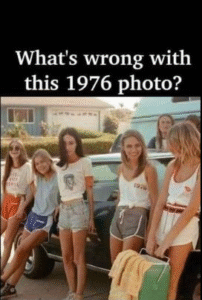Friendships from the 1970s are often remembered with deep nostalgia, and for good reason—they were, in many ways, simpler, more authentic, and rooted in a slower, more connected time. Unlike today’s digital age where connections can be fleeting and filtered through screens, the friendships formed in the ’70s were built on real-time experiences, long conversations, and shared physical presence. There was no texting or social media; if you wanted to talk to a friend, you picked up the phone—or better yet, showed up at their door.
One of the most defining traits of ’70s friendships was how much time people actually spent together in person. Hanging out wasn’t a planned event—it just happened. Kids rode bikes around the neighborhood, played in the streets until the streetlights came on, or lounged on shag carpets listening to records and talking for hours. Friends weren’t just people you talked to—they were people you did life with, in the most casual, unscripted ways.
Music, fashion, and culture played huge roles in bonding. Whether it was sharing a favorite vinyl album, going to a concert, or watching “The Brady Bunch” or “Happy Days” together, shared interests weren’t discovered through algorithms—they were passed between people, face-to-face. Creating a mixtape for someone, for instance, was a labor of love—painstakingly recorded on cassette tapes and given with personal meaning. Those small, tangible efforts helped cement bonds.
The slower pace of life in the ’70s also fostered deeper friendships. Without the constant distraction of phones or notifications, people were present. Conversations happened without someone glancing at a screen. Emotional connections grew over long walks, handwritten notes, or sleepovers where secrets and dreams were shared into the early hours. Trust and loyalty were earned over time and through real-life interactions—not curated Instagram captions.
Friendship in the ’70s wasn’t about popularity metrics or online validation. It was about sticking together through awkward years, broken hearts, or family drama. It was about forming “gangs” of friends who knew each other’s parents, hung out at each other’s houses, and probably got into a little innocent trouble together. The bonds felt stronger because they were part of everyday life—not separate from it.
In short, friendships from the ’70s were the best because they were real, personal, and rooted in physical presence. There was freedom in how people connected, a richness in how they spent time, and a purity in how they communicated. They may not have been perfect—but they were deeply human. And in an age where connection is easy but true closeness is rare, those old-school friendships still hold a special kind of magic.
